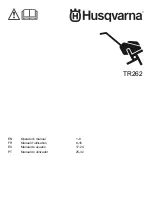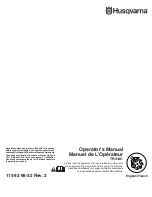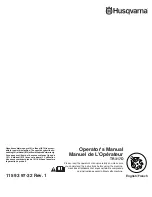
12
AC-SVX002C-EN
Pre-Installation
Unit Inspection
To protect against loss due to damage incurred in
transit, perform inspection immediately upon receipt of
the unit.
Exterior Inspection
If the job site inspection reveals damage or material
shortages, file a claim with the carrier immediately.
Specify the type and extent of the damage on the bill of
lading before signing. Notify the appropriate sales
representative.
IIm
mp
po
orrtta
an
ntt:: Do not proceed with installation of a
damaged unit without sales
representative’s approval.
•
Visually inspect the complete exterior for signs of
shipping damages to unit or packing material.
•
Verify that the unit is properly equipped and there
are no material shortages.
N
No
otte
e:: Corrosion due to dirt, road grim, road salt, and
other contaminates picked up during shipping is
not the responsibility of the carrier.
Inspection for Concealed Damage
Visually inspect the components for concealed damage
as soon as possible after delivery and before it is
stored.
If concealed damage is discovered:
•
Notify the carrier’s terminal of the damage
immediately by phone and by mail.
•
Concealed damage must be reported within 15
days.
•
Request an immediate, joint inspection of the
damage with the carrier and consignee.
•
Stop unpacking the unit.
•
Do not remove damaged material from receiving
location.
•
Take photos of the damage, if possible.
•
The owner must provide reasonable evidence that
the damage did not occur after delivery.
Repair
Notify the appropriate sales representative before
arranging unit installation or repair.
IIm
mp
po
orrtta
an
ntt:: Do not repair unit until the damage has
been inspected by the carrier’s
representative.
Unit Storage
If the chiller is to be stored in ambients of 32°F or less,
evaporator should be blown out to remove any liquid
and refrigerant isolation valves should be closed. If the
chiller is to be stored for more than one month prior to
installation, observe the following precautions:
•
Do not remove the protective coverings from the
electrical panel.
•
Store the chiller in a secure area.
•
Units charged with refrigerant should not be stored
where temperatures exceed 155°F.
•
At least every three months, attach a gauge and
manually check the pressure in the refrigerant
circuit. If the refrigerant pressure is below 200 psig
at 70°F (or 145 psig at 50°F), call a qualified service
organization and the appropriate Trane sales office.
N
No
otte
e:: Pressure will be approximately 20 psig if shipped
with the optional nitrogen charge.













































